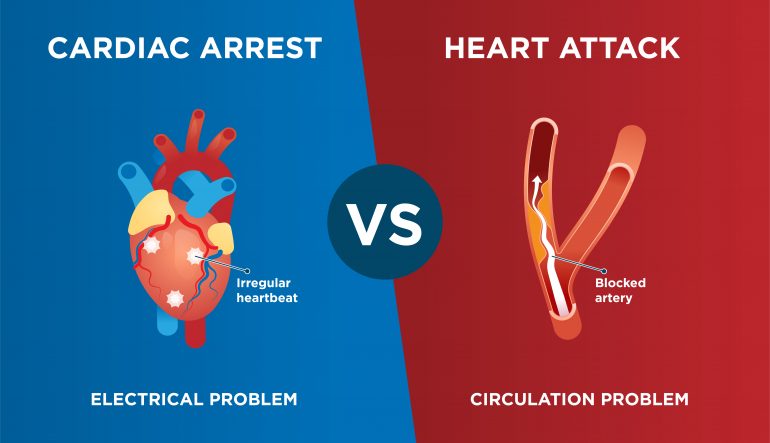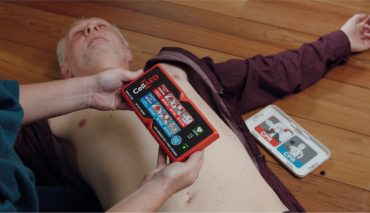Heart attack or sudden cardiac arrest?
These two terms are frequently interchanged to describe the same thing.
This can be dangerously misleading given their differences.
How do heart attacks and sudden cardiac arrests differ?
A heart attack happens when a coronary artery becomes blocked, restricting the flow of oxygenated blood to the heart.
A sudden cardiac arrest occurs when the heart stops pumping blood altogether. This can be due to the heart developing an irregular, non-pumping rhythm, or stopping completely.
If a heart attack can be described as a plumbing problem, cardiac arrest could be described as an electrical issue.
How can I tell the difference?
Is the patient conscious?
During a heart attack, the patient is usually conscious. They can communicate, and explain what they’re experiencing.
Loss of consciousness comes quickly in a sudden cardiac arrest. The patient will collapse, lose consciousness and will not be breathing normally.
Agonal breathing
If the patient is struggling to breathe, it may appear to the onlooker that they’re still conscious.
Agonal breathing describes this struggling to breathe as a result of a severe health issue, like a cardiac arrest.
In some cardiac arrest situations, it may present as the patient gasping or moaning. Instead of being true breathing, it is instead the body’s reflex reaction to the lack of blood pumping to the lungs.
“Not breathing” does not always mean lying passively. If someone has collapsed and is gasping for breath, but is otherwise unresponsive, cardiac arrest is the likely cause.
Heart attack can lead to cardiac arrest
There are usually plenty of signals that a heart attack is imminent.
Chest pain, heart palpitations, light-headedness or dizziness, fainting and shortness of breath are all signs of a possible heart attack.
For anyone experiencing these symptoms, the advice is clear: call for medical assistance.
Unchecked, a heart attack can escalate into sudden cardiac arrest.
When this happens, it is because the person experiencing the heart attack has developed a dangerous heart rhythm that can cause cardiac arrest.
If this happens, rapid care needs to be given in order for the patient to survive.
What do I do?
The first step to helping someone is the same whether they are experiencing a heart attack or a sudden cardiac arrest.
The best thing you can do in that moment, is call your country’s emergency medical response number right away.
Speed is critical – especially for cardiac arrest patients, whose chances of survival decrease by up to 10 per cent for every minute they don’t receive treatment following the event.
Of course, there’s plenty you can do today to be ready to help someone survive either event. Here’s a checklist to get you started.
RELATED ARTICLE: Being ready to buy time



